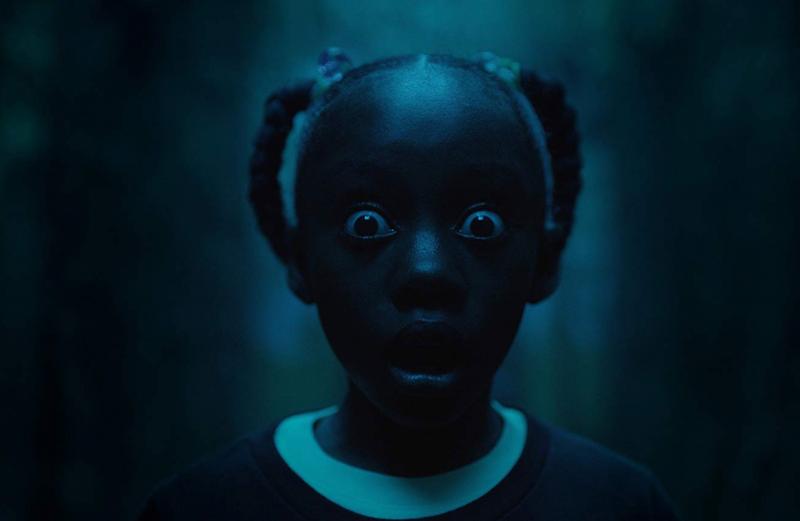The genre of horror is a fascinating one, in that it usually reflects the societal fears of the time. Director Jordan Peele perfectly echoed the country’s racial unrest with his directorial debut “Get Out,” which won him a screenwriting Oscar and was one of the best films of 2017. His sophomore effort, “Us” was released last weekend, and many were wondering if he could bring about the same mix of horror and cultural zeitgeist a second time.
With “Us,” Peele expertly positions himself as being one of our most thought-provoking, detail-oriented and scissor-sharp directors not only of the genre, but currently working today. “Us” is the work of a profoundly deep thinker, and one who slightly works against his instincts as a filmmaker at times, but without drastically diminishing the film’s overall impact.
But a couple warnings before viewing:
Know as little as possible about any detail of the film before going to the theater (that means if you are reading this before heading out, RIGHT HERE is a great place to stop!).
Do not anticipate a “Get Out” redux. Despite it being a blend of horror/social commentary/humor, “Us” is altogether a different book from the library.
Still as intelligent and efficient as his last film, it’s a deep rumination on humanity and social hierarchy. And while “Us” stumbles slightly in its ability to successfully wrap things up, the sheer ambition more than makes up for any missteps.
Lupita Nyong’o plays Adelaide, whom we first meet as a young girl in 1986. While on the Santa Cruz boardwalk with her family, she wanders alone into a funhouse where she encounters what appears to be an exact doppelganger.
Flash forward to present day and we see her family on a seaside vacation to the same area that unnerves her. She is joined by her goofy, good-natured husband (played by Winston Duke) and two children, Zora (played by Shahadi Wright Joseph) and Jason (played by Evan Alex).
Despite the kids’ indifference to the vacation and Adelaide’s apprehension of returning to a source of childhood trauma, the family tries to make the most of it and mingle with friends who live nearby (played by Tim Heidecker and Elisabeth Moss). After a beach outing ends in panic because of young Jason wandering off (much like young Adelaide did decades ago), it becomes obvious that this isn’t the respite the family was hoping for.
Their stay is further interrupted by a family that seems strikingly similar to their own who invade the house and terrorize them. And for the sake of respecting what Peele has crafted, I will refrain from divulging any more, plot-wise.
The cast is uniformly outstanding (or, in the case of Heidecker and Moss’s embodiment of affluence, fitfully appalling), especially Nyong’o, on whose shoulders the second-half of this film rests and who once again delivers.
Peele again narratively swings for the fences, and proves that he is not trying to coast on the success of “Get Out.” He crafts a diatribe on class that remains frightening and witty throughout, dropping into each scene clues and hints for attentive viewers. Even when he may not successfully stick the landing in all aspects, the film’s flaws spring from ambition rather than laziness.
He has dutifully delivered two outstanding, original slices of cinema in a short period of time that can withstand (and almost demand) repeated viewing for further rewards to their audiences.
Black horror contributions
Historically, black people’s contributions in the genre of horror have been as hidden as a hockey-masked serial killer in a wooded campground.
Peele’s two directorial films are notable not only for their ability to frighten the bejeezus out of people, but also for their commentary from the perspective of being a minority in America today.
Actually, black characters in the horror genre had, until recently, been reduced to usually being the earliest victims in a film’s body count. Complex magazine did a survey of 50 horror films with black characters, and found that, while not always the first to die (as often joked), few ever survive, and rarely are they the film’s heroes. Writer Valerie Complex did a little more thorough examination of the subject in her piece “Will it Get Better for Black People in the Horror Genre?” (www.blackgirlnerds.com, June 2015), and found that they were typically relegated to four archetypes:
- The Ghetto Dweller
- The Mythical/Sacrificial Negro
- The Voice of Reason
- The Sidekick.
In February, the Shudder channel released the documentary “Horror Noire: A History of Black Horror,” which begins with films at the start of the 20th century, like D.W. Griffith’s “Birth of a Nation.” While it was supposed to be an epic of national conciliation, it was actually horror for black audience members who watched the white mobs murdering a black man.
In the decades that followed, black actors were reduced to playing servants or derogatory stereotypes at best.
That all changed in 1968 with “Night of the Living Dead,” when Duane Jones as Ben provided horror (and, honestly, all genres) with its first black hero. Throughout the 1970s, the explosion of the blaxploitation genre allowed more roles in front of and behind the camera in the horror genre. And while empowering, they were still notable for playing up stereotypes of violence, drugs and hypersexualization.
In 1974, “Blacula” was notable for its ability to introduce more complex social matters to its otherwise campy title, thanks in large part to its director William Crain. In the 1980s, black characters were seen more frequently in the genre, but usually as sidekicks or as one of the aforementioned archetypes (think Scatman Crothers in “The Shining,” who sacrifices himself so a white family can survive, or most recently, Lil Rel Howery in this year’s “Bird Box”). The following decades found few outlets in the genre, but it was not without its pioneers and trailblazers, including:
- Darin Scott, writer/director/producer: “From A Whisper to a Scream”
- Ken Foree, actor: “Dawn of the Dead,” “The Devil’s Rejects,” “From Beyond,” “Leatherface: Texas Chainsaw Massacre III,” among others
- Rosalind Cash, actress: “The Omega Man,” “Tales from the Hood,” “Dr. Black and Mr. Hyde,” among others
- Ernest Dickerson, director: “Bones,” “Demon Knight” and episodes of “The Walking Dead” and “Dexter”
- Maverick Entertainment Group, studio: Producer of self-described urban horror films such as: “Dream House,” “The Evil Ones,” and “The Dawn,” among others.
Obviously, this is just a tiny sampling of the countless contributions throughout the years. And “Horror Noire,” which is available on iTunes, does a great job in recognizing many of the unsung heroes. Also, the site www.BlackHorrorMovies.com is a great repository of the many actors, producers, directors and those within the industry who have helped elevate their representation in the horror genre.




















































